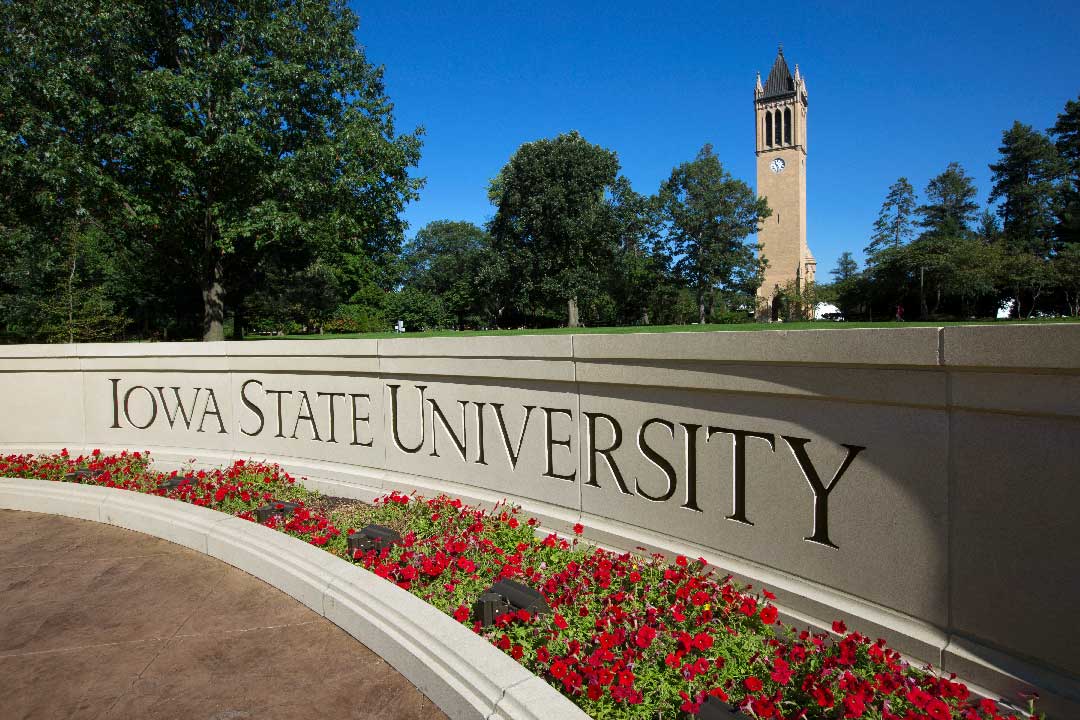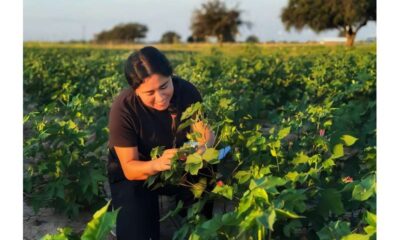Education
Iowa State Unveils Heat Alert App to Combat Rising Temperatures

Extreme heat poses a significant threat to public health, becoming the leading cause of weather-related fatalities in the United States. In response to this urgent issue, researchers at Iowa State University have developed a mobile application, CommHEAT, designed to alert users when their homes are at risk of overheating. The project, supported by a three-year grant of $1.2 million from the National Science Foundation, aims to provide personalized heat alerts to vulnerable communities.
During the summer of 2023, a collaborative team of faculty and student researchers conducted a pilot study of the app in Des Moines, targeting residents in inner-city neighborhoods where over half lack central air conditioning. “As far as we know, this localized and personalized heat emergency prediction is not available elsewhere yet,” said Ulrike Passe, an architecture professor and director of the Center for Building Energy Research at Iowa State.
The initiative began after a 2016 inquiry from a Polk County health official about identifying buildings most susceptible to heat. This project uses real-time machine learning to address those concerns, equipping communities with actionable data to mitigate heat-related risks.
Engaging with Communities
Connecting with the most vulnerable residents has been a cornerstone of the CommHEAT project. Tian Yao, a doctoral student in human-computer interaction, played a pivotal role in assessing community needs by immersing herself in various neighborhoods. She attended local association meetings and distributed thousands of surveys to ensure the research reflected the realities faced by residents during heatwaves.
“It’s challenging to reach people who may have multiple jobs and lack air conditioning,” Yao explained. The pilot study selected 15 qualifying volunteers, installing sensors to monitor indoor conditions. Participants provided feedback via brief surveys during heat events, defined as periods when the heat index exceeds 100 degrees Fahrenheit for three or more days.
The study also involved collaboration with local educators, including teachers Connie Simonsen and Macey Smith, who engaged students at Harding Middle School in the East Capitol neighborhood. They installed a weather station, allowing students to gather data and develop a curriculum focused on climate science and community resilience.
Leveraging Data for Better Predictions
The research team utilized extensive data collected from participant homes to create 3D thermal models that accurately reflect the unique characteristics of each building. This process involved collaboration among doctoral students and faculty members, including Baskar Ganapathysubramanian, who emphasized the importance of considering microclimatic factors.
“We aimed to account for as many variables as possible to predict how homes would react to changing weather conditions,” Ganapathysubramanian stated. By integrating outdoor weather data and building characteristics, the team enhanced their ability to forecast indoor temperatures accurately.
The CommHEAT app transforms this data into user-friendly alerts. It displays current and predicted internal and external conditions, notifying users when their home may become unsafe. The app’s social network feature allows users to connect with neighbors, facilitating communication during heat emergencies.
This collaborative effort not only addresses immediate public health concerns but also aims to support local heat and health action plans, ultimately reducing emergency calls and hospitalizations due to heat exposure.
The CommHEAT project exemplifies the power of interdisciplinary teamwork at Iowa State, demonstrating how academic research can directly benefit communities facing climate challenges. As the project progresses, the team anticipates a refined version of the app becoming widely available for implementation in community heat emergency plans.
Through ongoing analysis of participant feedback and the integration of local knowledge, the researchers are poised to make significant strides in protecting vulnerable populations from the dangers of extreme heat.
-

 Technology5 months ago
Technology5 months agoDiscover the Top 10 Calorie Counting Apps of 2025
-

 Health3 months ago
Health3 months agoBella Hadid Shares Health Update After Treatment for Lyme Disease
-

 Health3 months ago
Health3 months agoErin Bates Shares Recovery Update Following Sepsis Complications
-

 Technology4 months ago
Technology4 months agoDiscover How to Reverse Image Search Using ChatGPT Effortlessly
-

 Technology1 month ago
Technology1 month agoDiscover 2025’s Top GPUs for Exceptional 4K Gaming Performance
-

 Technology3 months ago
Technology3 months agoElectric Moto Influencer Surronster Arrested in Tijuana
-

 Technology5 months ago
Technology5 months agoMeta Initiates $60B AI Data Center Expansion, Starting in Ohio
-

 Technology5 months ago
Technology5 months agoRecovering a Suspended TikTok Account: A Step-by-Step Guide
-

 Health4 months ago
Health4 months agoTested: Rab Firewall Mountain Jacket Survives Harsh Conditions
-

 Lifestyle5 months ago
Lifestyle5 months agoBelton Family Reunites After Daughter Survives Hill Country Floods
-

 Health3 months ago
Health3 months agoAnalysts Project Stronger Growth for Apple’s iPhone 17 Lineup
-

 Technology4 months ago
Technology4 months agoHarmonic Launches AI Chatbot App to Transform Mathematical Reasoning




















